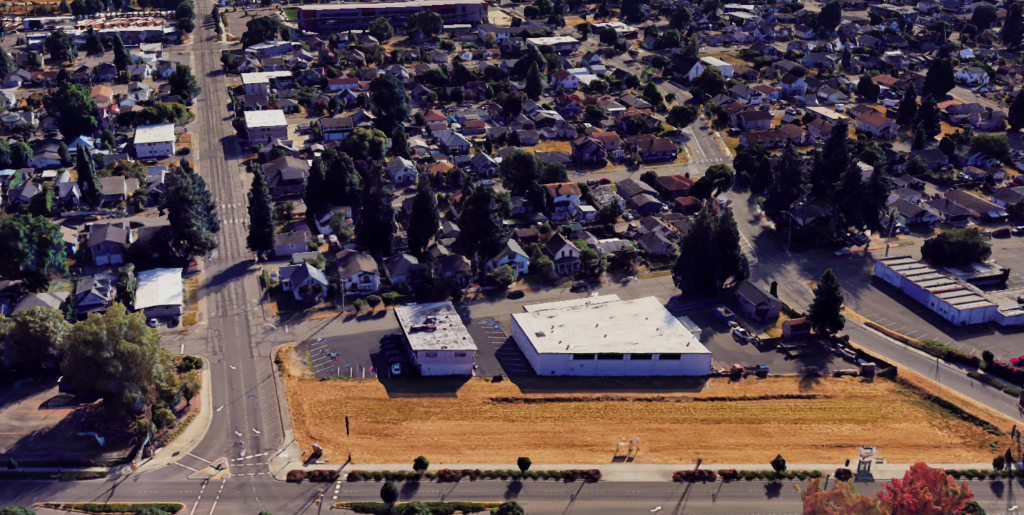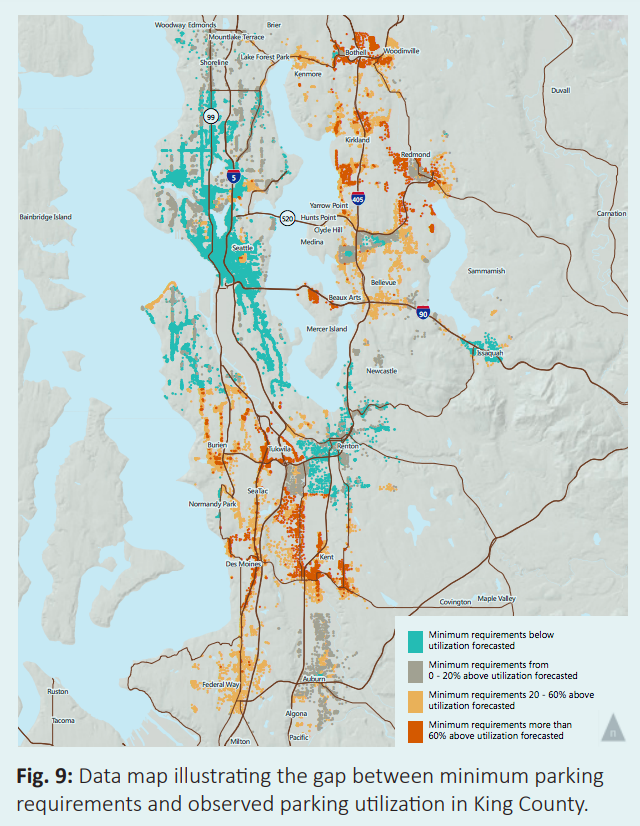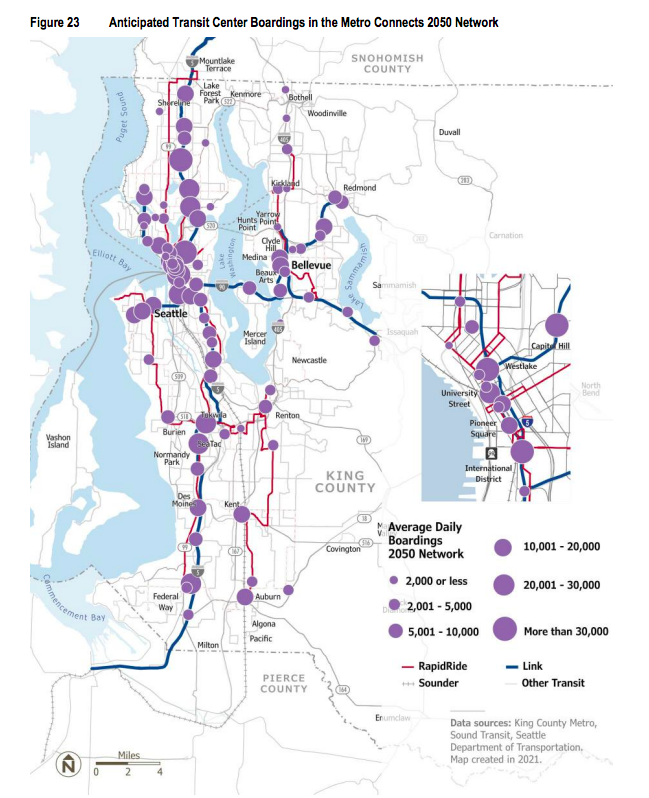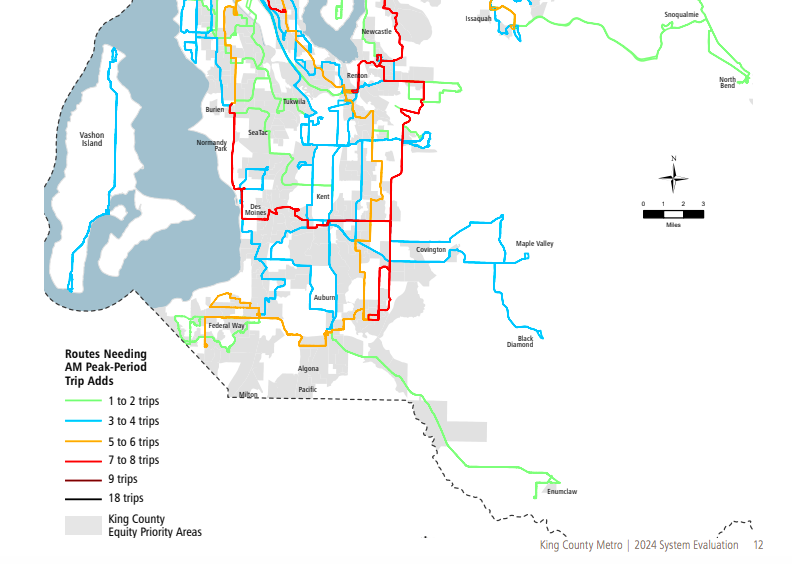
Looking east across the site of the proposed Logan Six development (field in lower third of photo), toward the adjacent historic homes in the North Renton neighborhood. Residents are concerned their neighborhood streets will be inundated with cars from the 100-unit Logan Six, which they fear has too little parking for its size. They are also worried about traffic in and out.

Architects rendering of proposed Logan Six Development. The project includes 1, 2, and 3-bedroom apartments, but has only one parking spot per unit.
North Renton residents have brought the long-simmering issue of Renton’s parking requirements back to the forefront. They are rightfully concerned about parking in their neighborhood. As the new Logan Six project makes its way through the process, it would be a good time for Renton Council and staff to reevaluate our parking standards to prevent the kinds of parking controversy that this project has generated.
For decades, King County Metro and other transit advocacy groups have encouraged Renton to reduce our parking requirements. Ten years ago King County Metro Transit concluded a lengthy study capturing their recommendations for “right sized parking” in their service area. The goal of the study was to encourage transit use and lower housing costs by avoiding “overbuilding”of parking.
The recommendations were controversial, because Metro was encouraging Renton and other suburbs to reduce our number of parking spot requirements to Seattle levels, even though our level of transit service was nowhere near as good as Seattle’s. Some of Renton’s Planning Commissioners, Council members, and staff embraced the recommendations, and some of us didn’t.
The ongoing debate and compromises left Renton with a minimum of one parking spot per unit in most of our multifamily housing zones, with an option for developers to put in 1.75 spots per unit if they chose to. I consistently pushed for more than one spot per unit (other than “transit-oriented development”), to keep fire lanes open, traffic safe, and keep our neighborhoods convenient, since I knew the transit agencies would take years to meaningfully improve our service. I also did whatever I could to press Metro and Sound Transit to deliver service commensurate with Seattle if we were going to have Seattle’s parking requirements.

This chart tells the story. Areas in green have satisfied King County Metro’s desire to reduce their parking below the “utilization”rate, meaning there is a shortage of parking and more demand for transit. While Renton has met Metro’s parking goal, our city remains underserved by Metro and grossly neglected by Sound Transit. We have neither enough parking or good transit. Meanwhile, Bellevue and other eastside cities have both an over-abundance of parking AND great transit.
The developer of Logan Six has chosen to build the minimum one parking spot per unit, and nearby residents know that will not be enough. Two or more cars per unit is much more common with two and three bedroom units. The drivers of the extra cars will seek parking throughout the North Renton neighborhood.
Even the strict new “Missing Middle Housing Law” passed by the legislature last year acknowledges that some of the new housing units created by subdividing multi-family lots might need two parking spots per unit, if not within a half mile of a “major” transit stop.
(6) Any city subject to the requirements of this section: ….
(f) Shall not require more than two off-street parking spaces per unit as a condition of permitting development of middle housing on lots greater than 6,000 square feet before any zero lot line subdivisions or lot splits; …
Renton should fix the issue now so that we don’t get more parking disputes like this in the future. If you wish to help, I recommend you encourage our City Council to increase our parking standards for residential projects like this.

“Metro Connects” full buildout plan in 2050, 25 years from now, still reflects only about 7000-10,000 Renton transit riders, or maybe 5% of our population at that time. There’s no way this ridership is enough to let every two-car household drop to one car.

Screenshot from Renton’s parking code shows that in most zones only one parking spot per unit is required for attached homes

A screenshot from Metro’s 2024 System Evaluation shows Renton being underserved in the morning by 7-8 trips, even on established routes (which we don’t have enough of). Mid-day and afternoon time periods are similarly underserved.

Data from the US Dept. of Transp. shows US households have an average of about 1.8 vehicles



And don’t forget some people don’t feel safe on the bus. There was a double shooting yesterday. https://www.kiro7.com/news/local/shooting-board-metro-bus-southcenter-police-search-suspect/GPBOVZSNPRCOTCODOKPHDIICPE/
You’re showing your white cis privilege. Wanting safety coloniser behavior.
Oh no! Not another building project that fails to cater to our God-given right to infinite, free parking! What a travesty! Clearly, the only path to salvation is to pave over everything—parks, sidewalks, maybe even a few schools—until every car has its own personal throne of asphalt.
But wait! What if… just hear me out… we stopped designing cities around the assumption that every adult (and probably their dog) must own two cars? What if we invested in transit, walkability, and—dare I say—bike lanes (gasp) instead of demanding that developers continue the noble tradition of prioritizing parking over housing?
Yes, Renton’s transit service is subpar—almost like decades of car-centric policies and endless parking expansion have made it financially and politically infeasible to develop robust alternatives! It’s almost as if we keep doubling down on car dependency and then acting shocked when transit doesn’t magically get better.
So, to all the North Renton residents clutching their pearls over the Logan Six project’s lack of parking: Congratulations! You’re living the dream of every urban planner who’s ever dared to suggest we stop overbuilding parking. This is what progress looks like. Fewer parking spaces mean less incentive for car dependency, more pressure to improve transit, and—most importantly—a reminder that a city’s job is to house people, not just their SUVs.
So you’re saying we should live like mass transit is already here, and it will magically appear?
We’re not going to get mass transit long as King County Democrats keep screwing working-class South King County.